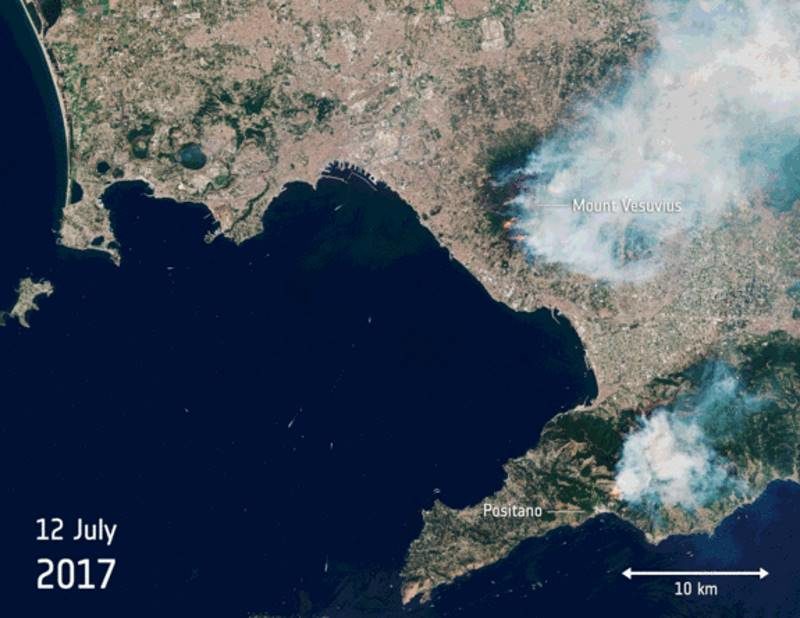
The smoke, visible in a new set of satellite images released by the European Space Agency (ESA), is coming from a series of wildfires on the mountain. According to the ESA, much of the woodlands in Vesuvia National Park, which contains the volcano and its surroundings, have been destroyed.
The fires have forced evacuations near Naples, while tourists on Sicily had to flee separate fires by boat, according to The Independent newspaper. Drought and high temperatures have driven the wildfires, but some officials suspect that some of the blazes on Mount Vesuvius were started by people, The Independent reported.
Smoke obscures Vesuvius in new satellite images taken by the Copernicus Sentinel-2B satellite on July 12, and thermal images show a number of blazes dotting the active volcano.
Vesuvius is most famous for its eruption in A.D. 79 that destroyed the Roman cities of Pompeii and Herculaneum. Pyroclastic flows of mud and ash buried the towns, preserving skeletons and in some cases leaving body-shaped voids that recorded exactly where victims of the eruption died. Vesuvius killed about 100 people in another eruption in 1906 and destroyed several villages when it again erupted in March 1944.
The current Italian wildfires have killed two people, according to Fox News. In all of southern Italy, including Sicily, at least 64,000 acres (26,000 hectacres) of woodland have been burned.



Reader Comments
to our Newsletter